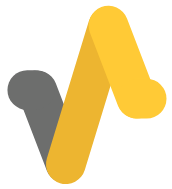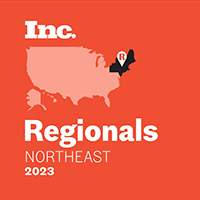Originally Published on February 24th, 2021 and updated on June 6th, 2024.
You’ve set up your Google Business Profile, know a thing or two about Google Analytics 4, monitor your social media sites, and ask customers to post a review after they patronize your website or brick-and-mortar storefront.
Where do you go from here?
Online reputation management is not only about creating a presence for your business online. The ultimate goal is to consistently increase your engagement and SEO ranking, expanding the visibility of your business and bringing in new customers. Before you can take steps to improve, you need a sustainable way to measure your progress.
That means tracking the right online reputation management metrics. In this article we cover the data points you should be keeping a close eye on month-over-month:
- Review Sentiment
- Local Search Rankings
- Review Volume
- Social Media Mentions
- Average / Star Rating
- Review Sources
- Percent Negative
- Percent Responded
- Response Time
- Invites Sent / Conversion Rate
With all the different review sites and potentially hundreds of reviews coming in each month, paying attention to a wide variety of online reputation metrics might seem like an overwhelming task.
We breakdown the key metrics related to effective online review monitoring your business should be tracking to ensure your reputation management system is functioning successfully.
1. Review Sentiment
Customer reviews are essential to your online reputation. They provide real-time feedback on consumer behaviors and preferences. However, many businesses have yet to harness the full potential of their reviews.
AI-powered review sentiment analysis goes beyond star ratings to uncover if the tone is positive, negative, or neutral. This provides an objective and more in-depth understanding of your customer's experience.
Review sentiment analysis allows you to discover trends in customer behavior that are especially helpful in identifying pain points and where you can improve. It also highlights the areas where your business thrives, making it an invaluable metric for monitoring your online reputation.
Tracking sentiment over time helps organizations better understand their brand perception, employee performance, customer satisfaction, and more. Customer review sentiment metrics at your fingertips allows you to make data-informed decisions to improve your reputation.
2. Local Search Rankings
Before buying a product or service, consumers will likely search online to help narrow down what business they will purchase from. Typically, shoppers will choose one of the top search results rather than spending time digging through the endless options online.
Therefore, monitoring where your business ranks in local search traffic on Google and other search engines is essential.
Businesses that rank higher in local search results are more visible and easily discoverable to potential customers. This directly impacts the number and frequency of leads a business receives.
A high local search ranking is a huge competitive advantage that makes your business more prominent and accessible. It provides social proof that your location is relevant, trustworthy, and popular.
Monitoring your local search ranking and taking steps to ensure your business ranks highly should be a core piece of your online reputation monitoring strategy.
3. Review Volume
In their 2020 Local Consumer Review Survey, Brightlocal found that 87% of consumers read online reviews for local businesses. On average, internet browsers read ten before trusting a business. Importantly, Brightlocal also found that 73% of consumers only care about reviews written during the previous month.
What does this mean?
For one, review volume is one of the most important numbers your business needs to track in terms of overall reputation management monitoring.
Further, review frequency should be your priority.
This is why we highly recommend monitoring your review volume per month as well as the overall volume. Having segmented data will allow you to track your consistency, not just your totals.
4. Social Media Mentions
If your brand has an online presence it will surely be discussed (and frequently) across social media platforms.
Like reviews, social media mentions are a core part of a business's online reputation. References to your company across social outposts, tagged and untagged, affect your brand's external reputation. Monitoring and engaging with social mentions gives businesses another view of their online perception.
Social media comments are another opportunity for two-way communication with potential customers. It allows businesses to promote and protect their brand identity from negative mentions. It also provides prospects with a chance to see your customer service style in action
Monitoring social media mentions can also help you get in front of negative posts that have the potential to go viral and have the power to undermine a brand's reputation. Understanding what customers are saying across different social media platforms allows you to monitor customer sentiment and proactively address negative feedback.
5. Average / Star Rating
The impact of your business’s star rating can’t be stated enough. According to Podium, the lowest rating that consumers consider engaging with is 3.3.
A case study by Location3 found that increasing your business’s star rating by 1.5 could lead to 13,000 more leads. Improving your rating means more business, which is why we recommend tracking your rating per review site as well as your rating per vertical.
Why are the specifics important? Consider this scenario.
'Spa Widewail' has one hundred reviews, fifty five-star ratings about the sauna and fifty one-star ratings about the nail salon. The resulting average, 2.5 stars, suggests that Spa Widewail is a subpar business. In reality, customers are satisfied with the sauna, it’s the nail salon that needs improvement.
Online reviews are more than free marketing.
They provide feedback and customer insights that your business should take seriously. By tracking your rating per vertical, you can pinpoint the areas of your business that need the most attention and measure if the efforts taken to progress your online reputation monitoring are working.

6. Review Sources
Businesses can receive feedback via multiple online review sites. Google is by far the most popular and widely-read, but ignoring other platforms is a lost opportunity to boost your online reputation.
Relevant review platforms will often differ between industries. For example, monitoring your GBP is a must for any local business, while DealerRater would be an essential site for an automotive dealer to be aware of.
Different review platforms will enable your business to receive feedback across multiple channels. Your customers' sentiment may vary on an industry-specific platform with a more focused audience vs. on Google. Monitoring relevant review sites and understanding their nuances will give you a more holistic view of your business.
Monitoring the frequency and volume of traffic from each platform can help businesses decide what site to prioritize in terms of available participation options (i.e. GBP posts). Businesses have finite resources so it’s important to know which site is the most impactful to your brand.
Pro-tip: don’t forget to keep an eye on and respond to your GBP's Questions and Answers section. Another participation opportunity.
7. Percent Negative
Focusing on critical feedback can be hard, but if you’re invested in making positive changes to your business you have to recognize your flaws.
Tracking the percentage of negative reviews reveals two things: the quality of your service, and whether your business is receiving enough reviews.
The first is straightforward.
If fifty percent of your reviews are negative, too many customers are walking out of your store unhappy. We know this can be tough to accept, but as we mentioned earlier, it’s the critical feedback that will ultimately help your business most.
The second requires further explanation.
Without prompting, most people won’t leave an online review unless they have something to complain about. Businesses that don’t proactively ask for reviews will naturally see a larger percentage of negative feedback. Everyone makes mistakes, which is why it’s vital to harness the voices of your satisfied customers.
As you increase the number of review requests sent you will see a fairer representation of opinion reflected in your reviews.
In fact, one Widewail customer saw a 75% reduction in negative sentiment within the first 90 months of using our Invite service. As you can see, negative review percentage demonstrates how well your business is generating reviews.
8. Percent Responded
It’s not just reviews that are important, it’s what you do with them.
Responding to reviews gives your business the opportunity to engage with your customers, and 96% of consumers will notice if you do. Google has gone as far as to recommend that businesses "reply to reviews to build [their] customers' trust."
Further, Harvard Business Review found businesses that respond to their reviews receive an additional 12% more reviews.

Some businesses only respond to negative reviews, focusing their energy on addressing concerns or apologies while ignoring their grateful customers.
On the flip side, some businesses overlook critical feedback, giving up the chance to make things right with their customers and improve their service.
At Widewail, we believe that responding to all reviews, positive and negative, provides the greatest opportunity for online reputation management. Turn negative reviews into a positive experience.
If not using an online reputation management service, be sure to track the percentage of reviews which receive responses along with breakdowns for positive reviews and negative reviews. This will reveal if your response team is providing adequate attention to everyone, both happy customers and those less satisfied.
9. Response Time
More and more, reviewers expect that businesses respond to them online. Not only that, Brightlocal found that 76% of survey respondents want businesses to answer them within a week.
Beyond consumer expectations, timeliness is key to getting the most out of your reviews.

How would you react if someone sent you an apology three months after the fact?
At best you might ignore the sentiment, seeing as that person didn’t put the effort in when it mattered.
At worst you might become angry about the incident all over again, leading to further conflict.
For negatives, a fast response gives you the greatest chance to address your guests’ complaints and potentially win back their trust. For positives, a fast response secures future business and demonstrates your commitment to customer service.
Track your review response times with specific data for positives and negatives to ensure you aren’t missing out on customer service opportunities.
10. Invites Sent / Conversion Rate
Our guide, 15 Proven Strategies to Get More Online Reviews, is a great resource for businesses hoping to increase their review volume. Ultimately the solution is simple: you need to ask your customers to share feedback.
In our experience, 20% of review invites turn into reviews. If you’re hoping to get 50 reviews a month, you will need to ask about 250 people. Track how many review requests you are sending per week and month to keep up with your objectives.
Of course, your conversation rates may not match up with the ideal reputation management metrics. Falling short isn’t the end of the world, it just means you need to allocate further energy to asking customers for reviews or find a more efficient method. Monitoring your review conversion rate - how many review requests result in posted reviews - is how you will determine if changes are needed.
You might be thinking to yourself, that’s a lot to keep track of. Luckily, there are automated options for monitoring your metrics. Widewail clients receive a monthly report that details all of the numbers mentioned above.
Reporting is just one piece of the puzzle. If you're a local business owner thinking about implementing a reputation management strategy, Widewail's Playbook will jumpstart your effort. Learn the framework that is a proven winner.














.png)

U3GM Blog Post Comments